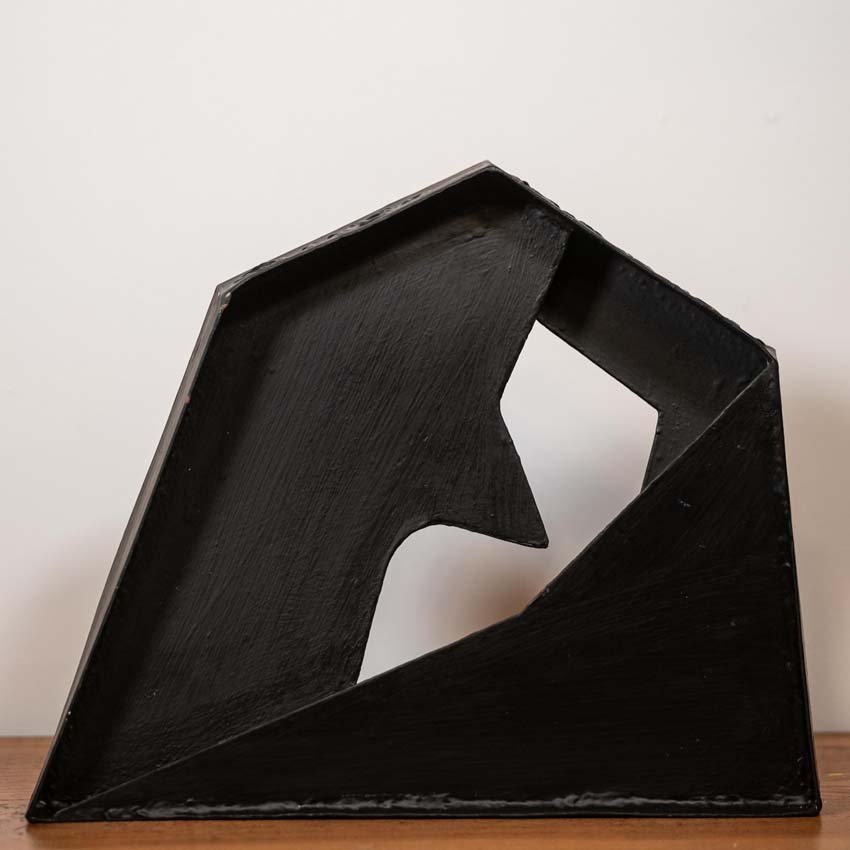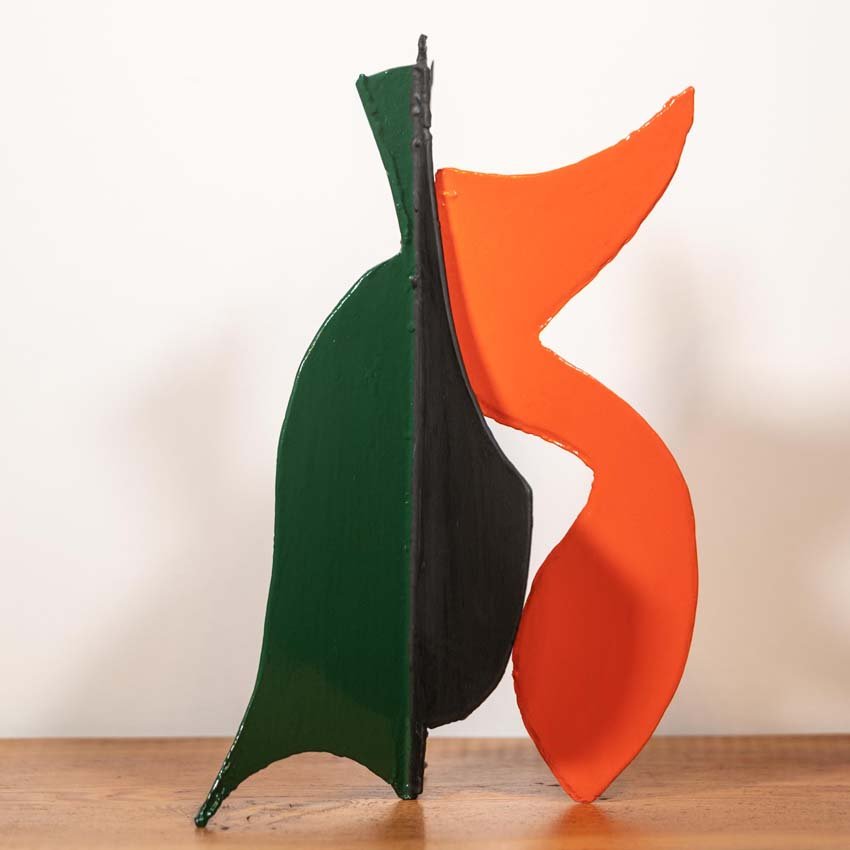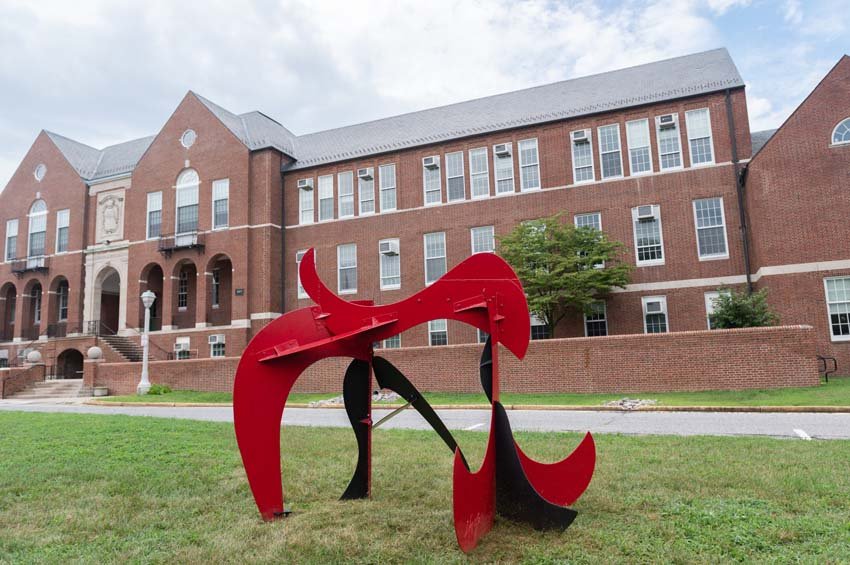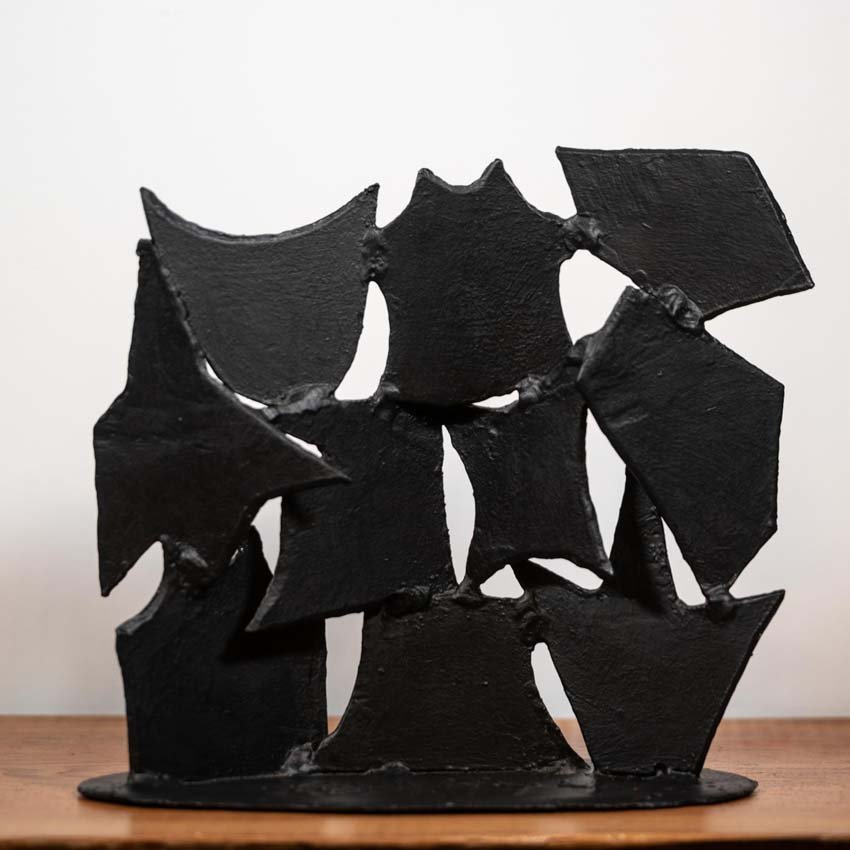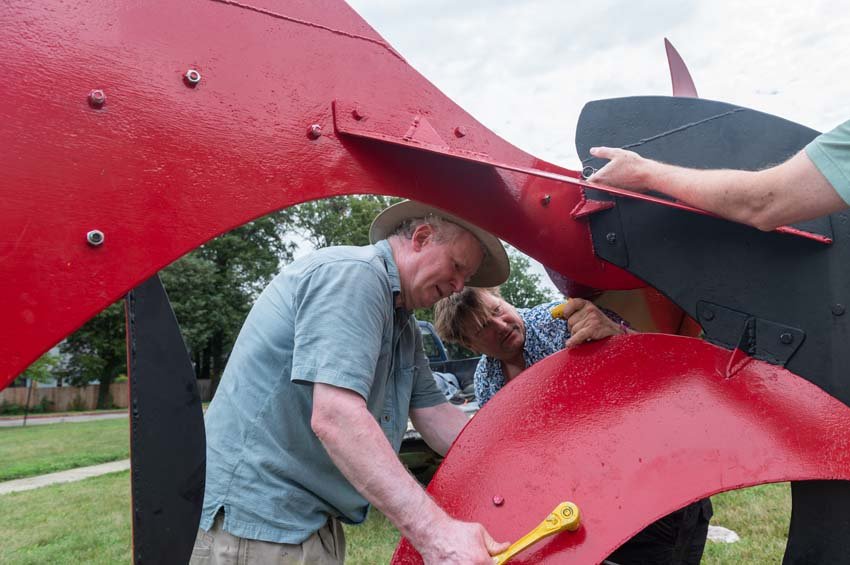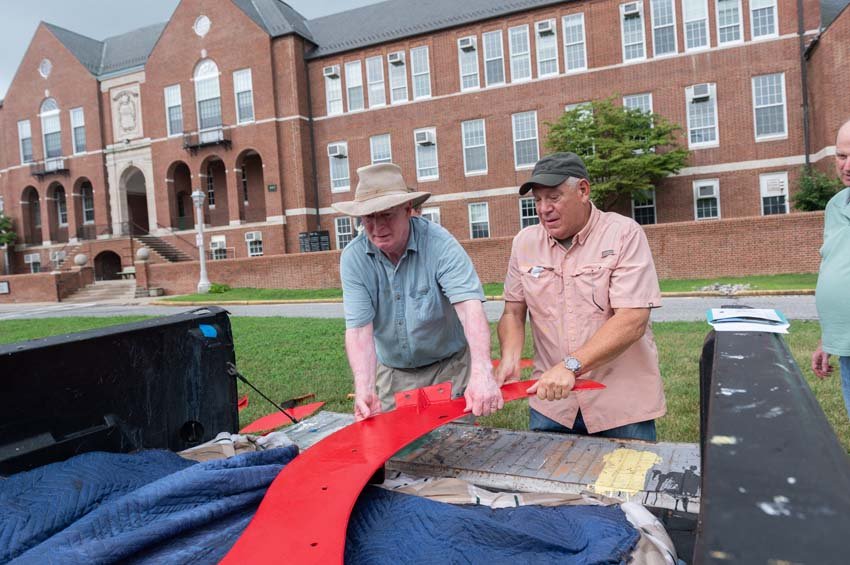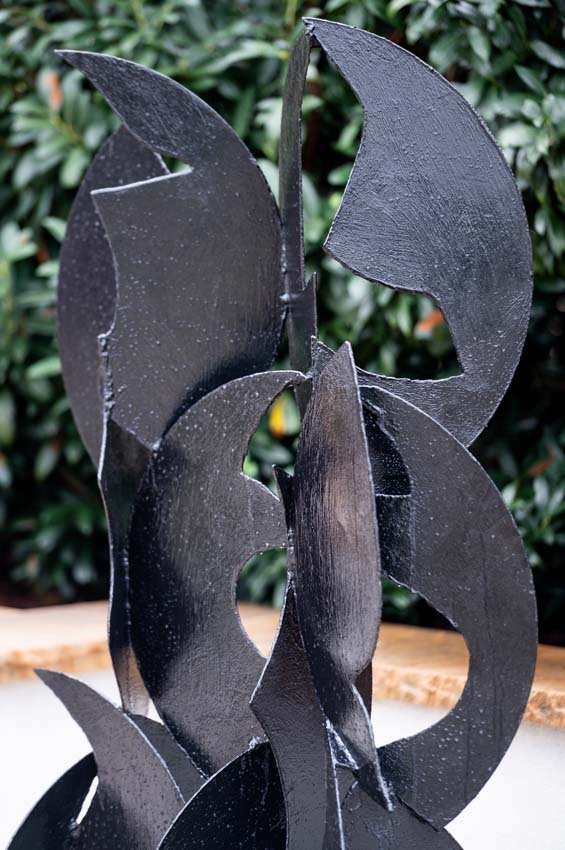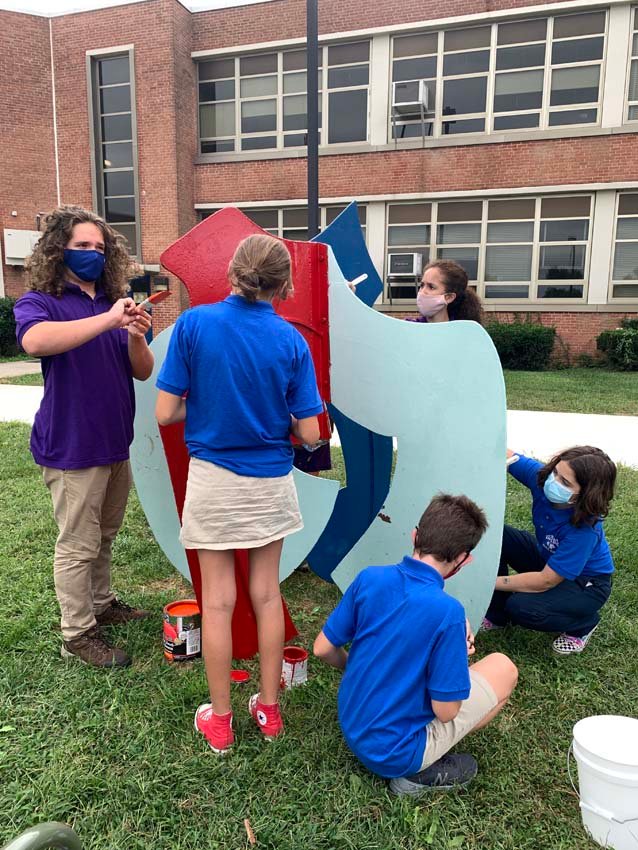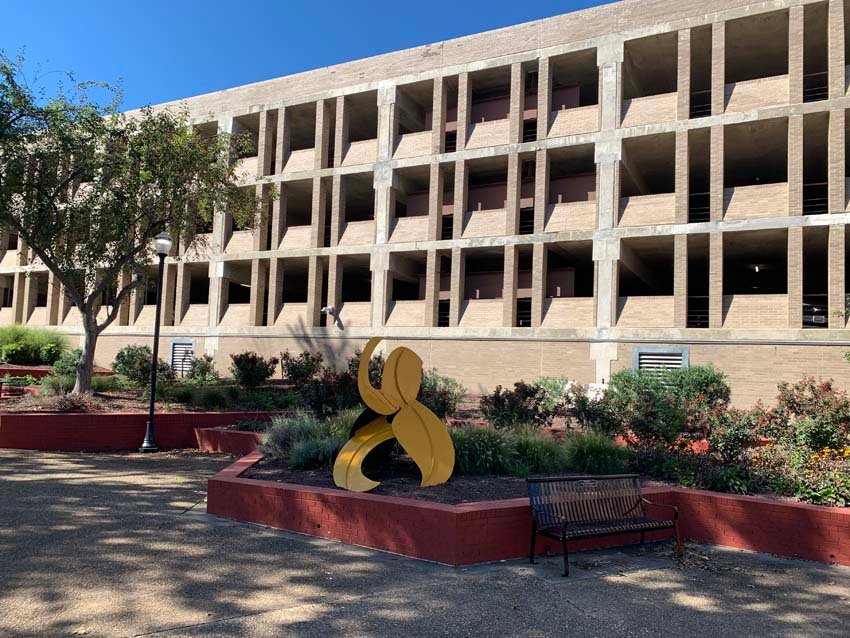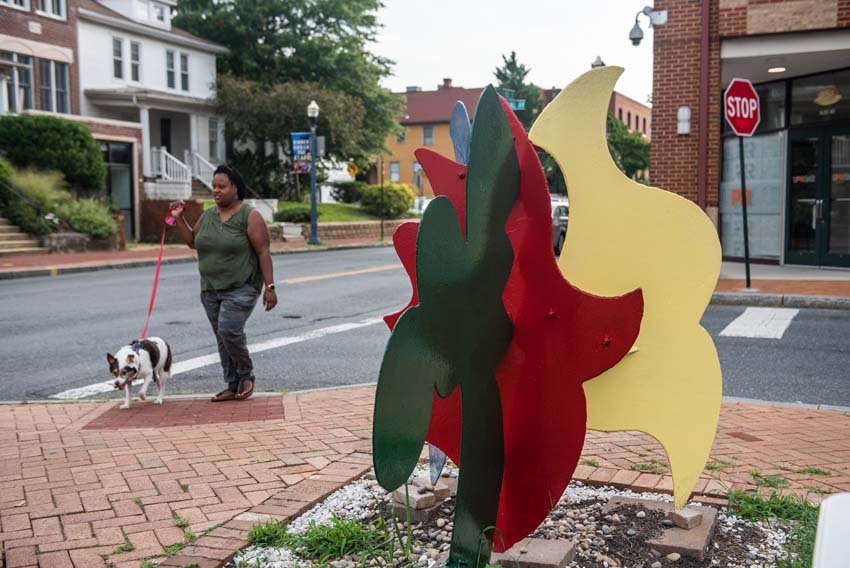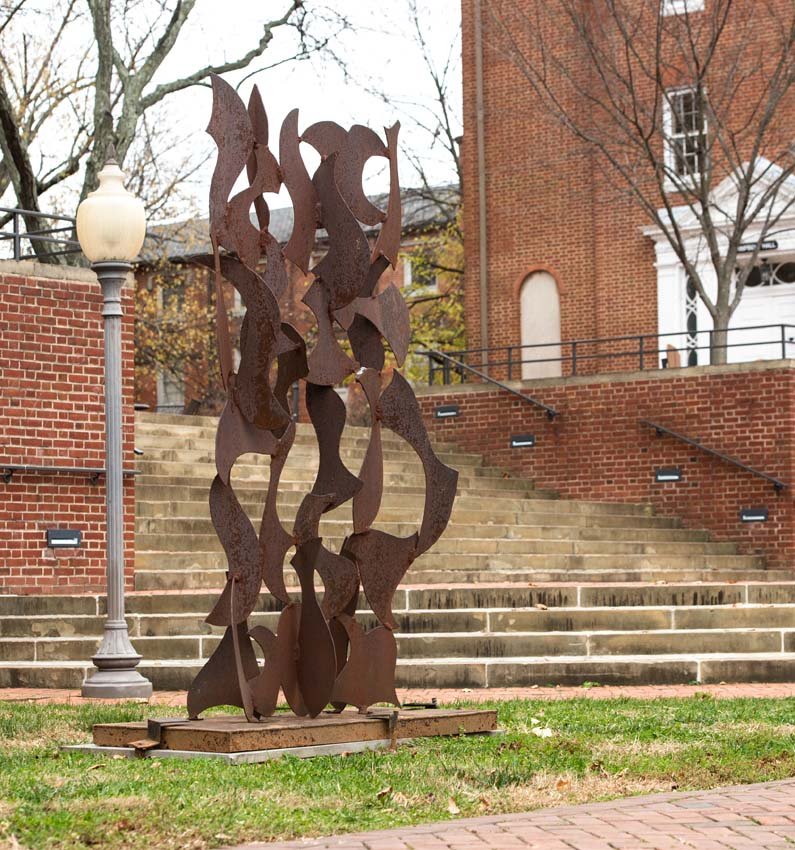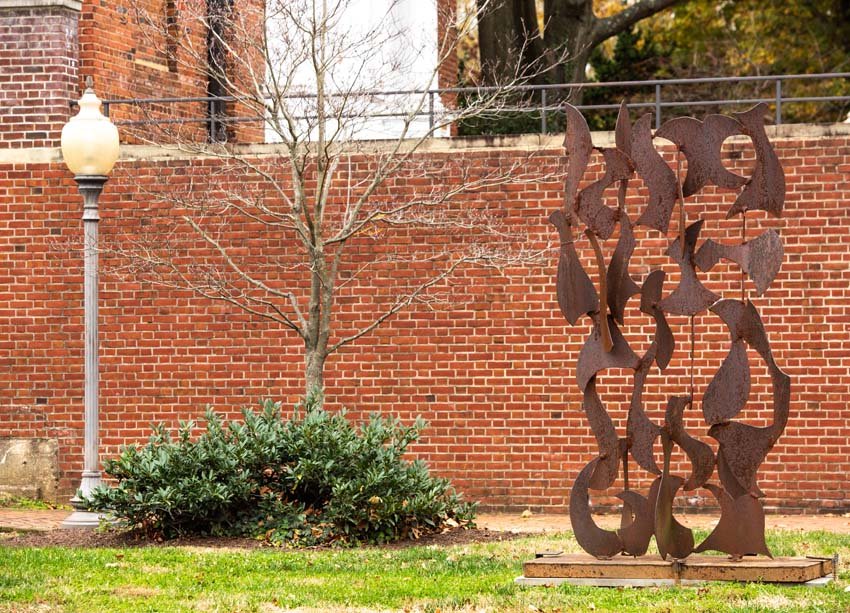+ By Dylan Roche + Photos by Alison Harbaugh
Since fall 2021, some scenes throughout Annapolis have looked a little different. Contemporary abstract sculptures stand in unusual, unexpected public places, presenting a noticeable contrast in some cases to the historic architecture found downtown or the quiet quaintness of Eastport. It would be difficult for either an Annapolitan or an out-of-towner to go by without a second glance.
This is part of what organizers want to achieve with the David Hayes Outdoor Museum, a collaboration that includes the Annapolis Arts District (AAD), the Inner West Street Association (IWSA), the David Hayes Art Foundation, and the city of Annapolis Mayor’s Office.
“We want to make this about the community—we’re really proud of how this was a collaborative effort,” explains Joe Sette, treasurer and board officer with the AAD and who spearheaded the project with the help of the AAD and IWSA boards, along with Alison Harbaugh and Darin Gilliam, co-owners of ArtFarm Studios. The AAD Sculpture Committee also included volunteers Jody Danek, Katherine Burke, and Erik Evans. “We wanted to bring something in that would bring all these arts organizations and agencies together, to place these pieces throughout the city, to unify different parts of our culture, and to get art in places where it normally wouldn’t be seen,” says Sette.
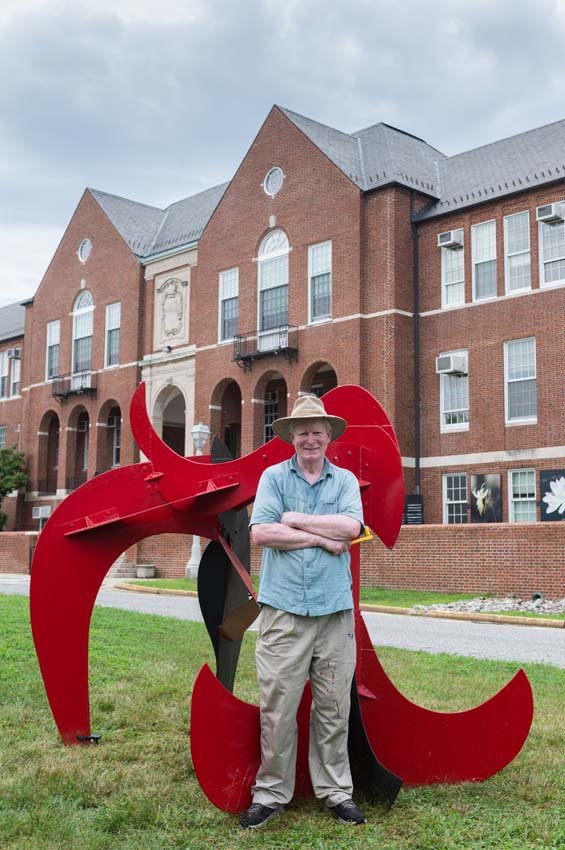
When organizers started this project, David Hayes’s artwork seemed like a natural fit for what they wanted to accomplish. A nationally renowned artist, the late artist (1931–2013) had a career that spanned more than 60 years and saw him working within his native United States and in Europe. His work has been included in more than 400 exhibitions and more than 100 collections. Art enthusiasts might have seen Hayes’s work at such institutions as the Museum of Modern Art or the Guggenheim Museum in New York.
Exhibition of his work today is managed by the David Hayes Foundation, which is run by his family, including his son, David M. Hayes. Those exhibits are not necessarily bound by four walls and a ceiling because his sculptures are made of steel and lend themselves to being displayed outside. Some of those currently on display in Annapolis have been shown all over the country. “His art was able to be portable, and the Foundation was willing to work with us, and we think it’s kind of bold and different,” says Sette.
Harbaugh and Gilliam share Sette’s enthusiasm for Hayes’s work. Says Harbaugh, “[It’s] organic, with shapes found in nature but created with solid materials, like steel.” When she asked his family about where Hayes drew his inspiration, they told her he was a curious man and that anywhere he was, he would immerse himself and take inspiration from that environment. His inspiration could come from walks in the woods or from train rides he would often take from Connecticut to New York City. He loved urban graffiti just as much as he loved nature. According to Harbaugh, he took all these ideas and incorporated them into his sculpture.
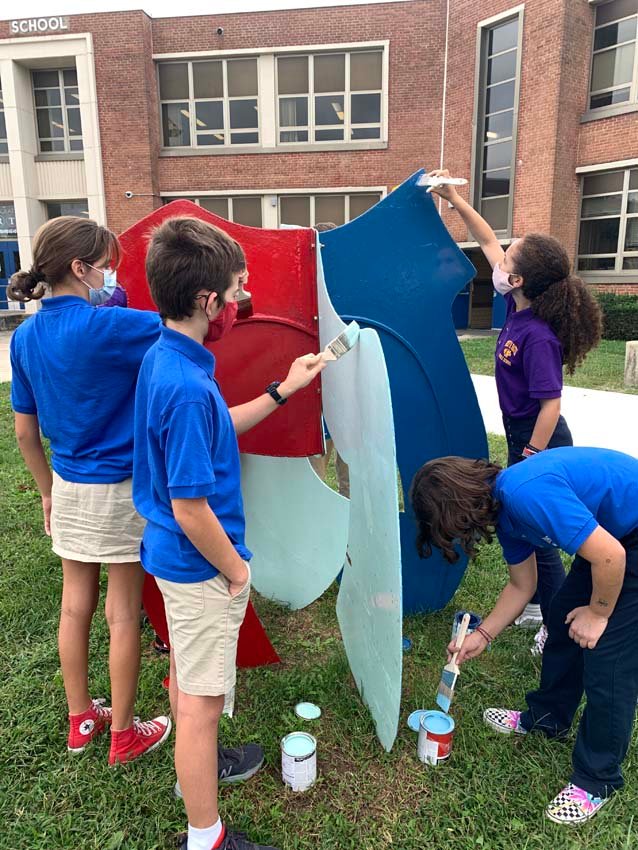
The abstract nature of the work appealed most to the exhibition’s organizers. Sette emphasizes the imagination behind them. He shares a story he heard about Hayes, explaining that when the artist was asked what his sculptures were supposed to be, he would reply that they were whatever the observer interpreted them to be. “It’s not based on literalness,” quotes Sette, “it’s based on imagination.” And that’s exactly why Sette loves the idea of the Hayes Outdoor Museum. “We wanted to bring imagination to this city,” he explains.
Even if people aren’t able to come up with any interpretation of the abstract steel shapes, Gilliam expects that they will still be able to marvel at them. “Sometimes you can look at art and you don’t fully understand the concept, but sometimes you can appreciate just the craftsmanship that goes behind it,” she says. “When I look at his pieces, I think about craftsmanship. I’m really intrigued by the fact that this man, sometimes by himself, worked with steel and welded it together.”
More than anything, the organizers see Hayes’s work as something completely different from the traditional art found elsewhere in Annapolis, where colonial architecture or maritime décor dominate most spaces. “We don’t have anything that’s colorful or really made up of odd organic shapes—everything is brick and wrought iron,” says Harbaugh. “There’s not a lot of variety in Annapolis. These [sculptures] will make people stop for a second and see something that’s out of place in a historic town.”
With a one-year lease signed on the artwork, the organizing team started coordinating with the David Hayes Foundation on how they would get the large pieces from Connecticut to Maryland. Harbaugh explains that David M. Hayes was the one who loaded the disassembled pieces into a pick-up truck and drove them to Annapolis, where they had to be reassembled like “really heavy Tinkertoys™.” Harbaugh was responsible for examining the photos and relaying to volunteers how the pieces of sculpture were to be reassembled. “It was cool to think about how the artist thought this out,” she says of the way the sculptures easily came apart and went back together.
Currently, the pieces are on display at Maryland Hall, Maryland Cultural & Conference Center (MC3), the Michael E. Busch Annapolis Library, the Banneker-Douglass Museum, The People’s Park, Lemongrass, Eastport Democratic Club, and Stanton Community Center, among other places throughout Annapolis. “We really were placing these pieces across the spectrum,” says Sette. “We didn’t just want it to be historic downtown Annapolis.”

Having the art in public spaces, where any passerby can see it and admire it, is a major part of the concept behind the outdoor museum, explains Gilliam. “Art can sometimes not be accessible to everyone,” she says. “What happens when you have public art is you give the opportunity for people to stumble upon art, and you inspire someone who would typically not have the means.”
Obstacles to individuals seeing art are many. Gilliam lists location, transportation, and finances as common reasons some people aren’t able to get to a museum or an art show, but those are not the only ones. In some cases, a person, such as a child, might simply not belong to a family that values art or encourages going to see it. “I love public art because you’re stumbling upon this treasure in the ‘wild,’—especially for kids,” she says.
While most people can recognize the importance of public art, the outdoor museum has not been without critical feedback. One opinion the organizers heard a few times was that bringing the work of a national artist—even a highly regarded one—was not as beneficial to the Annapolis art scene as promoting someone who lives and works within the community. In other words, why not support a local artist?
From Gilliam and Harbaugh’s perspective, bringing these sculptures to Annapolis is a hugely beneficial move. “When you go to college, when you go to art school, you don’t just learn about local artists where you’re from,” says Gilliam. “When you go to med school, you don’t just learn about the doctors that grew up in your neighborhood. You learn about and are inspired by people from all over the world.”
Letting Annapolitans see Hayes’s work in person and up close is part of arts education. It also provides an opportunity to build community around the exhibits—something they are doing with their yearlong programming. “We can pay artists to be teachers, give back to organizations, bring people in[to] their spaces when their spaces have been empty for so long,” says Gilliam.
Harbaugh agrees. “One of the biggest things [we] always say is we’re always trying to build our community,” she says, noting that the sculptures are drawing curious-minded visitors to places such as Maryland Hall and MC3. They’re even signing up for workshops. In many ways, the work of this nationally renowned artist is getting people excited about seeing other art and learning to create art of their own. “There’s all this cool intertwining of things, and we include local artists and local organizations, so they get the spotlight,” says Harbaugh. “This art has created a bigger conversation.”

The educational aspect of the outdoor museum will include programming throughout the year, led by Harbaugh and Gilliam. It commenced in fall 2021, around the same time that the sculptures went up in Annapolis, with a party at MC3 that was attended by members of the Hayes family and local arts leaders. Since then, the programming has brought arts teachers together to discuss everything from sculpture to color theory. “It was almost a challenge, because we’re used to doing these exhibits that last maybe a month or two, and now here’s something we have to program for a year,” says Gilliam. Next on the schedule are workshops during Annapolis Arts Week, running from June 5 through 12.
“This was our first attempt to bring an annual show to Annapolis,” says Sette. “We hope this will be the first installation, and [that] we do this every year or every couple of years. We saw an opportunity to bring imagination to Annapolis, to get people excited about viewing something like this in the future.”
If people get nothing else from this celebration of Hayes’s career, the organizers hope the sculptures force Annapolitans to see their city, and maybe even the world, a little differently. “When it comes to art, I don’t think people should be so comfortable,” Gilliam says. “Because then art’s not doing its job.” █
